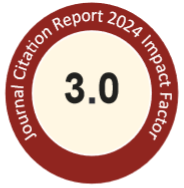Abstract
Di-(2-propylheptyl) phthalate (DPHP) is a plasticizer and has been suggested to be a subchronic toxicant in rats. DPHP has been approved to be used in food containers and handling by the U.S. Food and Drug Administration. The use of DPHP is still increasing, and the risk of human exposure to DPHP via food may be high. Exposure markers measured in human samples are commonly used to monitor human exposure levels. Ultra-performance liquid chromatography-mass spectrometry (UPLC-MS) and a rat model were used to discover tentative DPHP exposure markers. DPHP and mono-(2-propylheptyl) phthalate (MPHP) were used as the precursors for calculating metabolite candidates using biotransformation mass changes of known enzymatic reactions. A rat model was designed to validate these metabolite candidates as tentative exposure markers. A total of 28 signals show dose–response relationships and these signals contain a few isomers. The chemical structures of 15 tentative exposure marker signals were speculated based on the product ion mass spectra from MS/MS analysis. These 15 signals included 7 chemical structures and some of them may be isomers. The different arrangement of the atoms in space of these isomers should be validated by standard compounds in the future studies. Among the 7 speculated chemical structures, 2 structures were novel tentative DPHP metabolites, and 5 structures have been previously reported in the literature. The results indicate that using UPLC-MS and a rat model can be used to identify tentative toxicant exposure markers. © 2018
ScienceDirect Link
Recommended Citation
Shih, C.-L.; Hsu, J.-Y.; Tien, C.-P.; Chung, Y.-N.; Zgoda, V.G.; and Liao, P.-C.
(2019)
"Exposure marker discovery of di-2(propylheptyl) phthalate using ultra-performance liquid chromatography-mass spectrometry and a rat model,"
Journal of Food and Drug Analysis: Vol. 27
:
Iss.
2
, Article 13.
Available at: https://doi.org/10.1016/j.jfda.2018.11.002
Creative Commons License

This work is licensed under a Creative Commons Attribution-Noncommercial-No Derivative Works 4.0 License.
Fulltext URL
https://www.sciencedirect.com/science/article/pii/S1021949818301686/pdfft?md5=e0c65f477f8e747f046ec326927cee63&pid=1-s2.0-S1021949818301686-main.pdf
Included in
Food Science Commons, Medicinal Chemistry and Pharmaceutics Commons, Pharmacology Commons, Toxicology Commons


Abstract Image